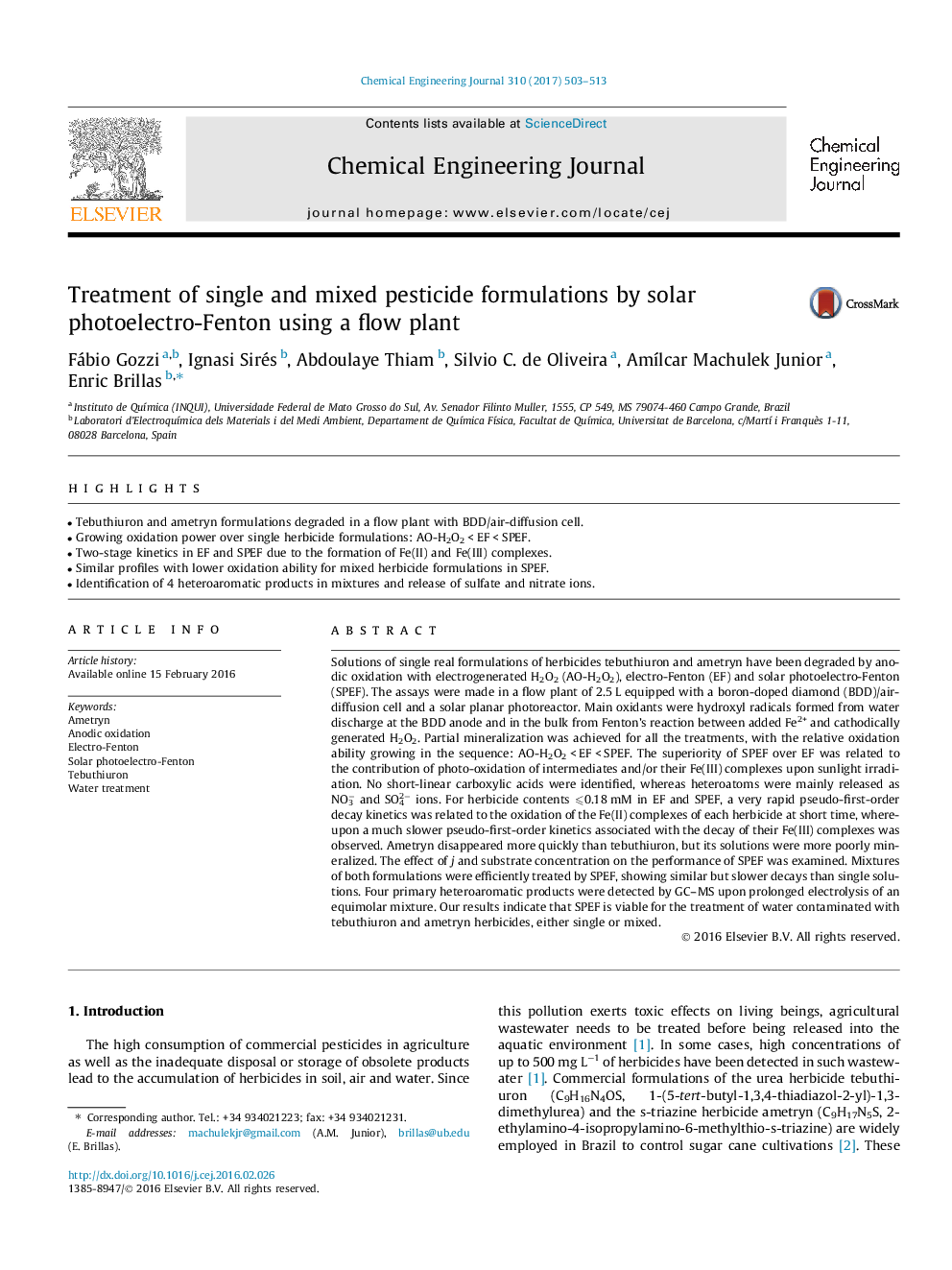| کد مقاله | کد نشریه | سال انتشار | مقاله انگلیسی | نسخه تمام متن |
|---|---|---|---|---|
| 6466761 | 1422968 | 2017 | 11 صفحه PDF | دانلود رایگان |

- Tebuthiuron and ametryn formulations degraded in a flow plant with BDD/air-diffusion cell.
- Growing oxidation power over single herbicide formulations: AO-H2O2Â <Â EFÂ <Â SPEF.
- Two-stage kinetics in EF and SPEF due to the formation of Fe(II) and Fe(III) complexes.
- Similar profiles with lower oxidation ability for mixed herbicide formulations in SPEF.
- Identification of 4 heteroaromatic products in mixtures and release of sulfate and nitrate ions.
Solutions of single real formulations of herbicides tebuthiuron and ametryn have been degraded by anodic oxidation with electrogenerated H2O2 (AO-H2O2), electro-Fenton (EF) and solar photoelectro-Fenton (SPEF). The assays were made in a flow plant of 2.5 L equipped with a boron-doped diamond (BDD)/air-diffusion cell and a solar planar photoreactor. Main oxidants were hydroxyl radicals formed from water discharge at the BDD anode and in the bulk from Fenton's reaction between added Fe2+ and cathodically generated H2O2. Partial mineralization was achieved for all the treatments, with the relative oxidation ability growing in the sequence: AO-H2O2 < EF < SPEF. The superiority of SPEF over EF was related to the contribution of photo-oxidation of intermediates and/or their Fe(III) complexes upon sunlight irradiation. No short-linear carboxylic acids were identified, whereas heteroatoms were mainly released as NO3â and SO42â ions. For herbicide contents ⩽0.18 mM in EF and SPEF, a very rapid pseudo-first-order decay kinetics was related to the oxidation of the Fe(II) complexes of each herbicide at short time, whereupon a much slower pseudo-first-order kinetics associated with the decay of their Fe(III) complexes was observed. Ametryn disappeared more quickly than tebuthiuron, but its solutions were more poorly mineralized. The effect of j and substrate concentration on the performance of SPEF was examined. Mixtures of both formulations were efficiently treated by SPEF, showing similar but slower decays than single solutions. Four primary heteroaromatic products were detected by GC-MS upon prolonged electrolysis of an equimolar mixture. Our results indicate that SPEF is viable for the treatment of water contaminated with tebuthiuron and ametryn herbicides, either single or mixed.
Journal: Chemical Engineering Journal - Volume 310, Part 2, 15 February 2017, Pages 503-513